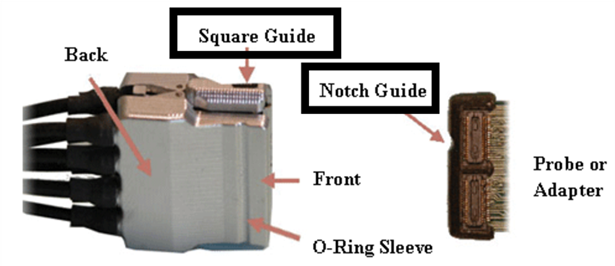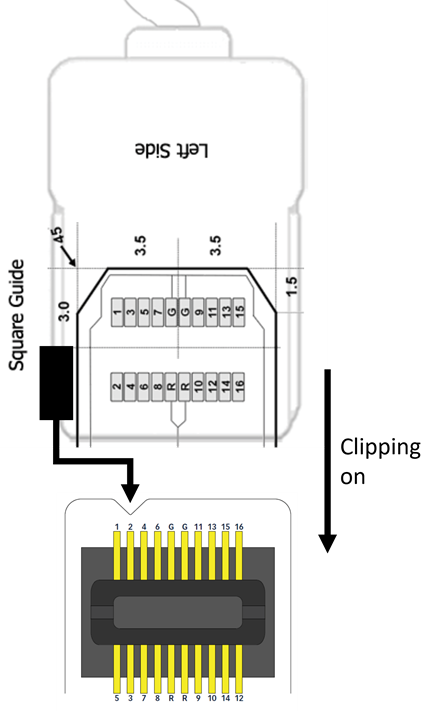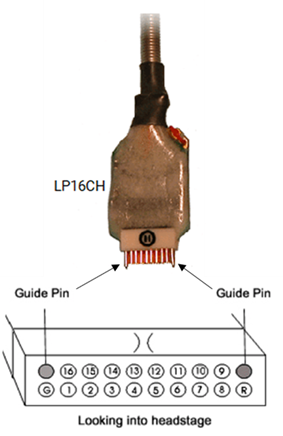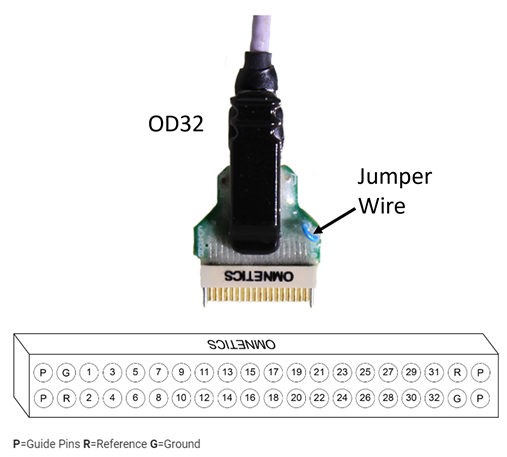Connecting Your Headstage and Adapter
TDT headstage and adapters have specific connection orientations that must be followed for the pinouts listed in the documentation to be correct. If you connect a headstage or adapter backwards, your map will be wrong.
This page will list out a few of the many possible headstage and adapter connections. Be sure to carefully consider your equipment and verify that the connections you make for your specific setup are correct.
Zif Clip® Headstage Connections
TDT Zif Clip® headstages use visual indicators on the headstage and probe adapter to mark proper connection orientation. The headstage has a black rectangle on one side that you must align with a notch cutout on the probe or adapter. You can find this information on our ZC headstages page as well as below. The ZC headstages page also includes important instructions for proper headstage handling when connecting to the probes or adapters not covered here.

In the image above, you can see the black rectangle on the headstage and the notch cutout on the probe or adapter. Please take a moment to notice these on your own physical hardware if you have it with you. If you are teaching students or lab colleagues, please point this out to them.
Below is the same concept but with a ZC16 headstage pinout and an Neuronexus electrode probe pinout.

Notice in the ZC16 headstage webpage that the image actually shows the headstage horizontal instead of vertical. These types of schematic pinouts are what you will need to use to trace out your full mapping route. You might find it helpful to screenshot or print the connectors for ease of visualizing the connections.
Note
You can use Microsoft Paint or some other image editing tool to crop and rotate headstage, adapter, and probe images to align them with how you would see them visually. You can also physically print out the images, cut them out of the paper, and align them on a table.
Omnetics Headstage and Adapter Connections
Omnetics connectors are very popular in neuroscience and TDT uses them for both headstages and adapters. Many vendors use Omnetics connectors for their probes as well.
Some Omnetics connectors, like the 16 channel ones used on the LP16CH headstage or ZCA-OMN16 are polarized, which means they can only connect in one orientation. This is because the guide pins on the Omnetics connector are asymmetrical and, because they are bigger than the channel pins, you physically cannot flip around the connection.

The guide pins are the larger silver pins in the image. These would connect to the edges of one row only on a mating adapter or probe. The connector pinout are the headstage channel numbers if you were to look at the headstage with the pins closest to your face. These pinout channels are the preamplifier recording channels.
Higher channel count Omnetics connectors might not have asymmetrical guide pins, as you can see with the OD32 or the LP32CH

Because you can make the connection in two ways, it is important to note which side is the 'front' and which is the 'back.' Generally, the Omnetics label on the connector will be the front, but always compare to the online images for other visual references like GND and REF jumper wires to verify the orientation.
Important
Please compare your headstage or adapter with the images available in the hardware documentation to see the correct orientation. If you are unsure, please ask support@tdt.com